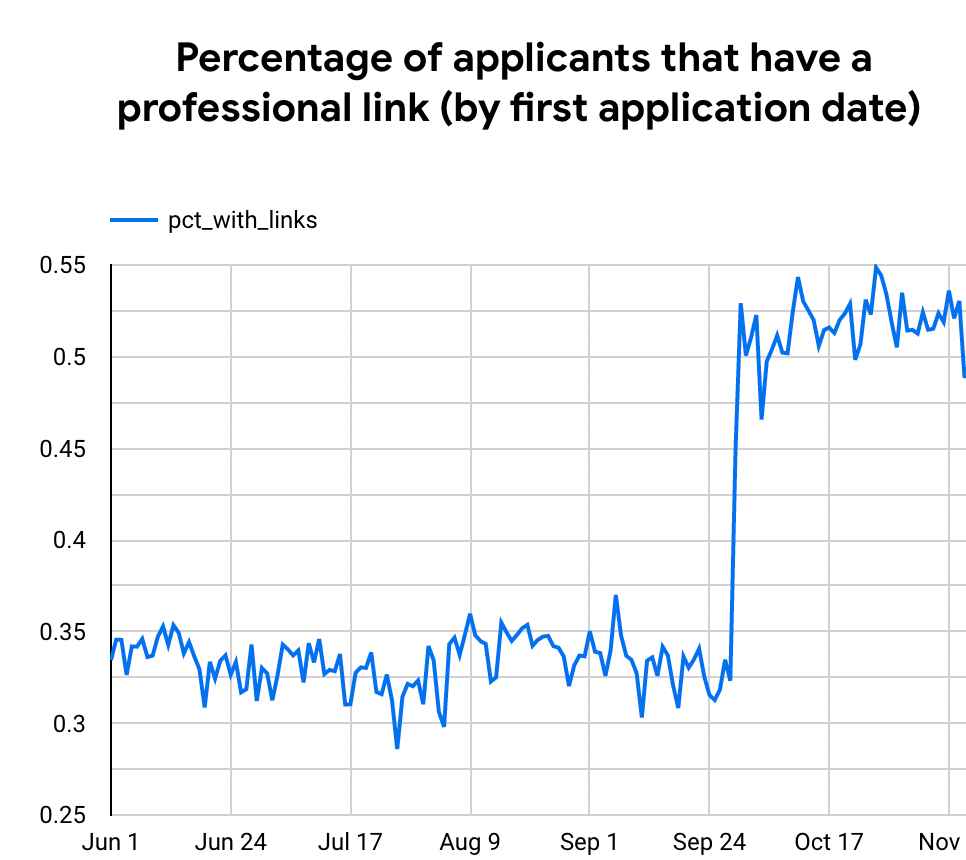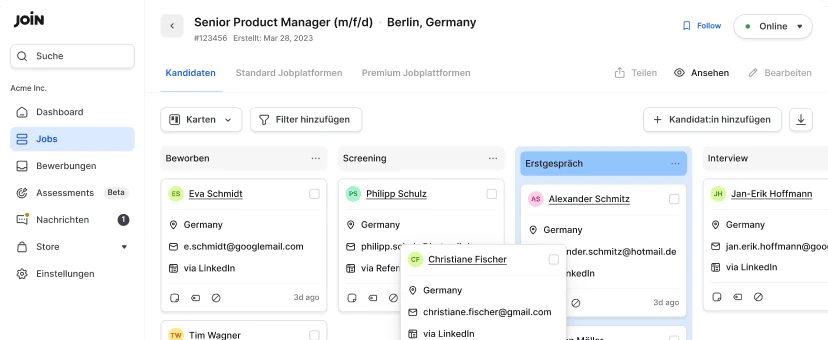Don’t let talent slip away: The importance of an optimised candidate application flow
When optimising your talent acquisition process, it makes sense to look at how you can speed up your tasks as a recruiter. How can you screen candidates more quickly? How can you communicate faster and more efficiently? But it’s also important to consider the other party—your candidate.
Table of contents
Here at JOIN, we receive a lot of feedback from recruiters and candidates alike about how processes can be improved. And one of the main problems mentioned is a slow recruitment process.
That’s why we’ve written a bunch of articles already about recruitment automation, highlighting steps you can take to improve your recruiting process. From creating an effective recruitment communication strategy to these ATS tips and hacks to speed up your recruitment.
Now, most of these automations focus on the big time savers that can help you shrink your time to hire from a 50-day to a 15-day process. But have you ever considered minor time savers (we’re talking minutes) that can prevent an applicant from applying altogether?
Today’s post is about one seemingly small change that can tremendously impact your job ad’s conversion rate.
A common problem in the candidate application flow (and how to solve it)
The issue we’re talking about has gained quite some traction in the recruitment industry lately, and for good reason. Let’s take a viral LinkedIn post for illustration:
As recruiters and hiring managers, we tend to focus on what frustrates us, and how we can save time on our tasks. But that means we sometimes forget to take our candidate’s experience into consideration. And this can pose a problem for your talent acquisition efforts.
How this problem can hinder your number of applications
Now, this wasn’t as big of an issue for recruiters in the past. Because often companies were calling the shots, and candidates were lucky to get invited for an interview.
But in the ever-intensifying War for Talent (especially when it comes to tech-related roles), companies no longer have the luxury to offer a frustrating candidate application flow. Applicants expect you to provide them with a smooth and straightforward job application flow that doesn’t ask them to repeat themselves and waste time on necessary actions.
If your requirements are a hassle, talented candidates will move on to the next company instead. Resulting in a lower candidate conversion rate for your job ads.
Why this problem is still so common
For many recruiters, the CV is still the most important piece of information when it comes to assessing whether an applicant is the right fit for the job.
But if you receive hundreds of CVs for a job opening, going through all of them to qualify or disqualify candidates is typically too time-consuming. Especially since everyone’s CV is formatted and arranged differently. Some might list their work experience first, while others might start with their top skills.
So to simplify the screening process, recruiters often ask candidates to manually fill out their work and education history. That way, the recruiter saves time and effort as they can assess applications more quickly. But although it seems to make sense from the recruiter’s perspective, it means duplicate work for the candidate. And that, in turn, can negatively affect the recruiter as well as they might miss out on the perfect candidate.
So how to solve the issue?
The solution is a candidate application flow that allows for quick screening of applications while not requiring additional manual work on the candidate’s side.
A new candidate job application flow
Here at JOIN, we noticed that recruiters and hiring managers mostly rely on three pieces of information:
- The applicant’s uploaded CV
- Links to professional profiles (such as LinkedIn or Xing)
- Answers to screening questions
That’s why we’ve decided to create a simplified, one-page job application flow. If a candidate applies to a job through our JOIN software, they are no longer required to manually input their work and education history. Instead, applicants are only required to fill out the three pieces of information listed above.
The effect was visible almost immediately: More applications than before. Candidates are now less likely to abandon the application process due to annoying repetition (see the monkey meme from the LinkedIn post).
And to speed up the process even further, our tool uses CV parsing technology that automatically recognises professional links inside a candidate’s CV. Meaning, if a candidate uploads their CV or résumé, and it contains a professional link, the field for professional links in the application form will automatically show the link that’s in their CV.
This brings us to another instantly visible effect of the simplified application process: The increase in links to professional network profiles in applications.

The graph illustrates the instantaneous increase in the number of links in applications since the implementation of the simplified application process.
This is just one of the many features JOIN offers to help recruiters attract and hire top talent faster.

Other ways to improve your process
The candidate application flow is just one step in the wider hiring process. Although optimising this part is a great way of increasing your job ad conversion rate, there’s much more you can do to improve your hiring process as a whole.
And in today’s highly competitive labour market, optimising and automating every step of the way is now more important than ever. Need inspiration on how to further perfect your process? Then check out our collection of free HR articles.
Or go directly to one of these articles about how to improve your hiring chances:
Frans Lelivelt
Frans is JOIN's multilingual Senior Content Manager. His main topic of interest in the recruitment space is DEI and how companies can reduce their (unconscious) biases to make the world of work a fairer, kinder place for everyone. Outside of work, he tries to do the same for animals, spending much of his spare time in the kitchen preparing plant-based feasts.


